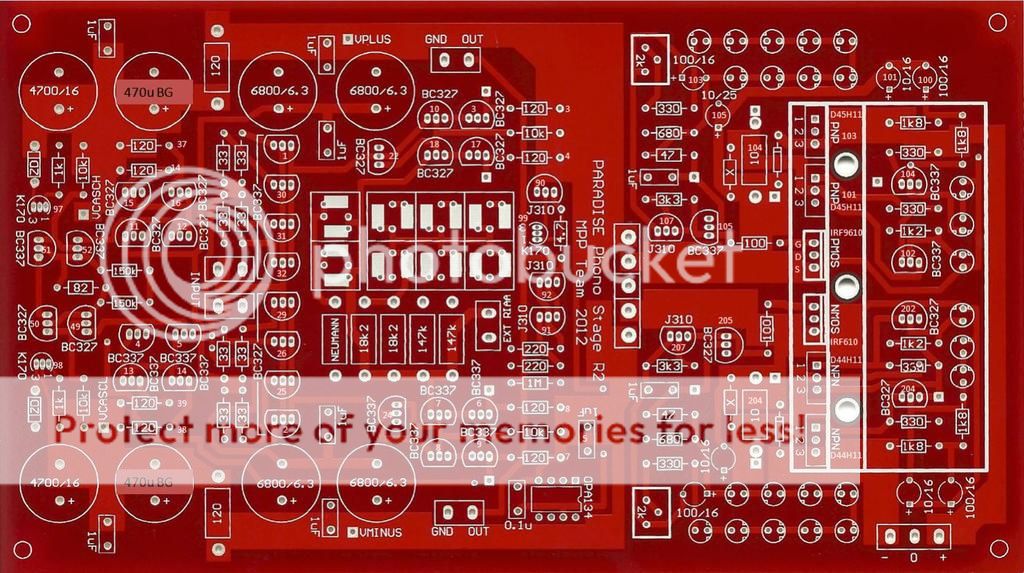Yes they were Vcap CuTF, about $200 for a set if i remember right, i actually got them - but cannot tell if they are worth it - because haven't built one without them. But as it is with high end components - the minor improvement is very often not worth the price they cost - if you are not aiming for the very best. Also these were matched +-1% if i remember correct, that is a big plus though.
No multidollarsThere was a group buy for vcaps it was multi hundred dollar.
I have a very closely matched set of styrene caps for the riaa if you want them. 33 and 11n with wimas to add the last few pf.
£10+ p&p
;i cannot afford..
You got P.M
Hi,
have a look for the TE Con's LR1 1% and YR1 0.1% series at Mouser.
Both types feature thin films of a NiCr alloy, pressed on metal end caps and tinned copper wire legs for low money in 0207 casings.
jauu
Calvin
Thank you for the golden info
I am connecting power to one channel for first time,everything seems fine ,except the output offset is fluctating beetween ca 40mv to -40mv I am using OPA627, is this sommething to worry about?
I am later going to install the buffer PCB.
Hope someone is still reading this thread.
I am later going to install the buffer PCB.
Hope someone is still reading this thread.
Ake, when you first power the Paradise up it takes about 70 hours of continuous running for the banks of el'caps to fully form. They only see a small voltage and as they form the DC offset begins to drop. You'll only drop to a couple of mV of dc drift once you have the Paradise in a box, it'll never get better than +/-10mV until it is fully cased up.
My builds used to start off at +/-100mV and settle down to 0.1mV> over the course of a few days.
The OPA 627 is a little better than the standard spec op-amp, but at significant cost. I'm not sure the difference is audible.
My builds used to start off at +/-100mV and settle down to 0.1mV> over the course of a few days.
The OPA 627 is a little better than the standard spec op-amp, but at significant cost. I'm not sure the difference is audible.
In my experience, the biggest output offset fluctuation comes from thermal drift of the input transistors. The servo has a time constant of about 1s, so anything faster will not be regulated away.... Try blowing on the input transistors and watch in awe what the output does 
In a box, the thermal drift is massively reduced. You could also glue a piece of copper foil on top of all input transistors, to reduce thermal airflow and couple them better....
In a box, the thermal drift is massively reduced. You could also glue a piece of copper foil on top of all input transistors, to reduce thermal airflow and couple them better....
- Home
- Source & Line
- Analogue Source
- Paradise Builders

